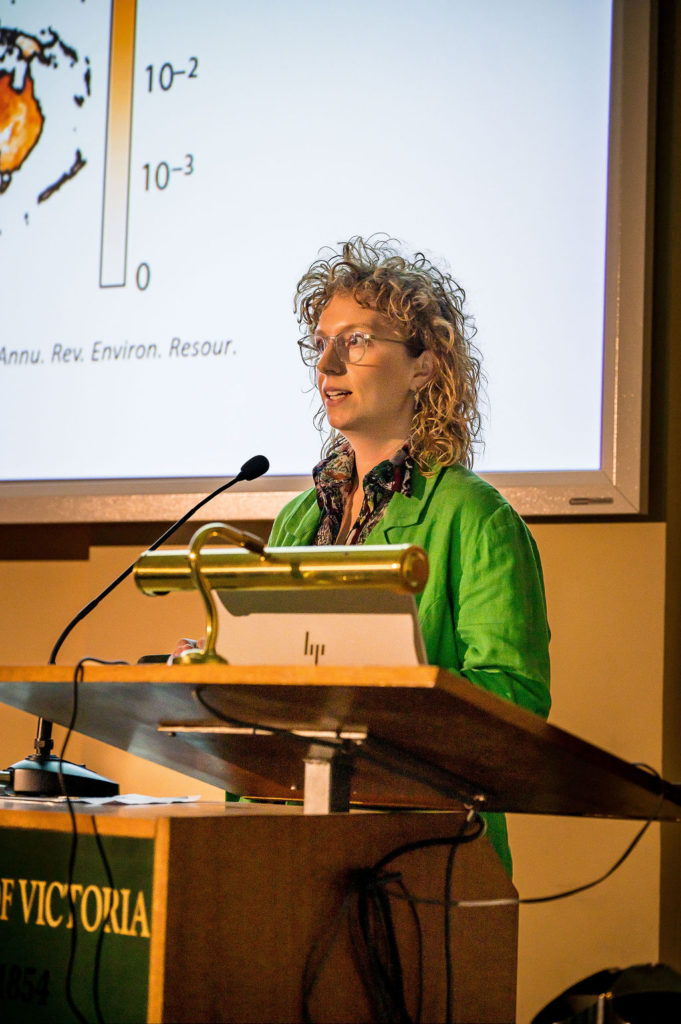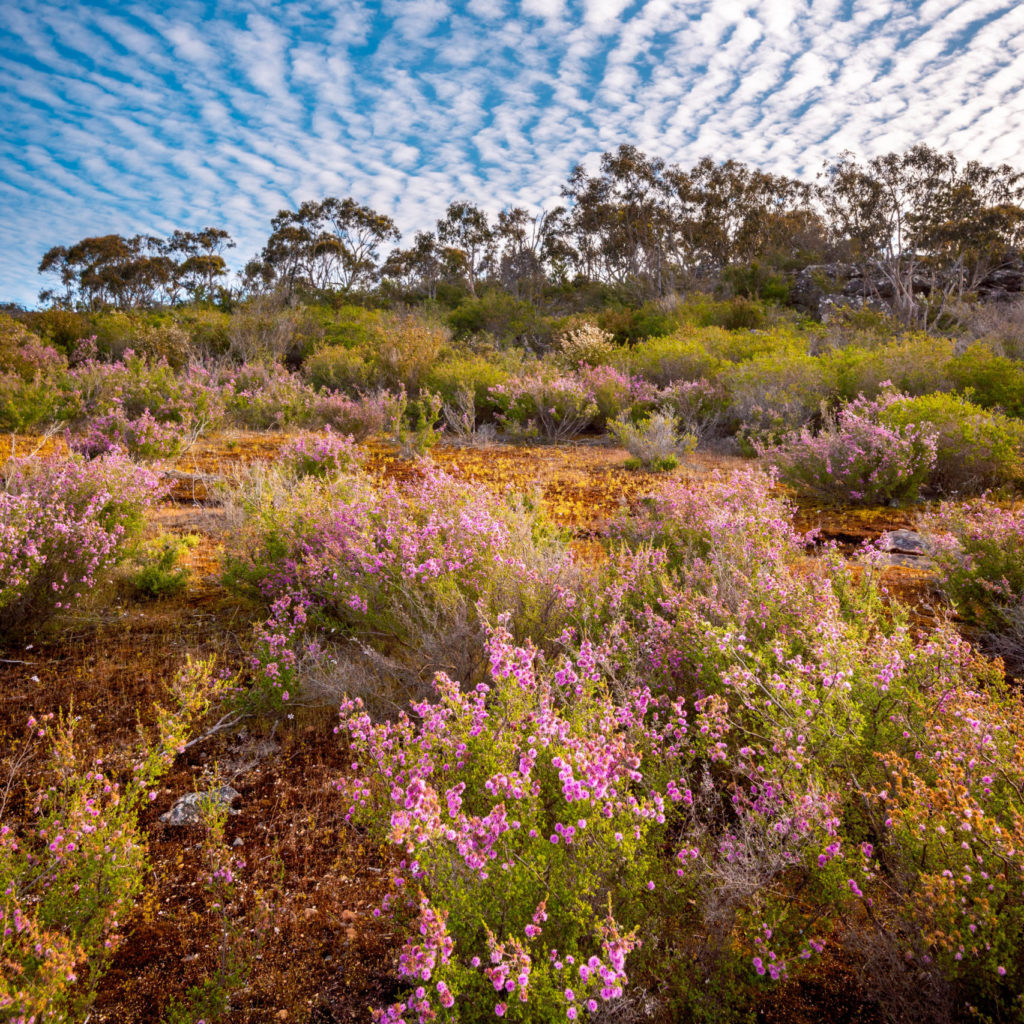How Fire Shapes Plant Life Cycles
By Ella Plumanns Pouton MRSV
RSV Young Scientist Research Prizes (Biological sciences) – 2nd place

Fire is a key driver of plant diversity, and many plants have adaptations that help them thrive in fire-prone ecosystems. However, changes to fire activity, including a higher frequency of hotter fires like The Black Summer Fires of 2019-2020, threaten thousands of plant species worldwide.
Plants display an array of traits that help them cope with recurring fire. Studying fire-response traits may help us understand the ways in which fire influences species – or groups of species – and make predictions of plant change over large areas.
Some species can resprout post-fire, and some retain their seeds in woody fruits until fire passes. Others are less well-equipped to handle fire. Mountain Ash, the tallest flowering plant in the world and one of the best at storing carbon, cannot resprout post-fire and takes a long time to mature, making it more vulnerable to fire.1
To understand the future of plant populations under fire regime change, we need to understand changes across the plant life cycle, for a range of species and across ecosystems – from ungerminated seeds to mature trees, both above and below ground.
I studied how fire impacts heathland plants across their life cycles in Gariwerd – otherwise known as the Grampians. Knowing how plants are impacted by fire allow us to understand how frequently heathland environments can tolerate fire, and what type of fire.
Gariwerd has an incredible diversity of plants and has a long history of applied fire. First Peoples* have used fire to care for Gariwerd for over 60,000 years. However, some areas have not experienced cultural firing practices since the arrival of Europeans. Present patterns of fire are primarily shaped by wildfires and governmental planned burns. There have been several large wildfires in Gariwerd in the last twenty years.
 I found that fire patterns affect plants across their life cycle: from seed to germination and establishment, to the transition to mature plants. For example, fire had a substantial influence on the proportion of mature plants at a site, highlighting the importance of considering what plants are doing, not just where they are.
I found that fire patterns affect plants across their life cycle: from seed to germination and establishment, to the transition to mature plants. For example, fire had a substantial influence on the proportion of mature plants at a site, highlighting the importance of considering what plants are doing, not just where they are.
The influence of fire depended on the kinds of traits that plants exhibit. For example, resprouting ability influenced how frequently species above ground could tolerate fire, and seed longevity influenced how frequently species could tolerate fire below ground. Using these traits to make predictions of fire-driven plant population change enables land managers and scientists to incorporate ecological knowledge into fire-related management and decisions.
Lastly, I quantified the kinds of fire patterns suitable for Gariwerd plants. Less time between fires poses a risk to some plants, particularly to non-resprouting species that store their seed in their canopy and those that mature slowly.2 But it’s a balance: long periods without fire can negatively impact other kinds of species.
In the face of more frequent, severe wildfires globally and the biodiversity crisis, understanding the types of fire regimes that support different plants across the entirety of their life cycle provides scientific foundations for fire management. Understanding how fire drives ecological change will allow us to support biodiversity into the future and prevent the extinction of flora across ecosystems in Victoria.
*The Djab Wurrung, Eastern Maar, Gunditjmara, Jaadwa, Jardwadjali, Jupagulk, Wergaia, and Wotjobaluk peoples.
References:
- Smith AL, Blair D, McBurney L, et al (2014) Dominant Drivers of Seedling Establishment in a Fire-Dependent Obligate Seeder: Climate or Fire Regimes? Ecosystems 17:258–270. doi: 10.1007/s10021-013-9721-9
- Plumanns-Pouton, E.S., et al. (2023). Time since fire shapes plant immaturity risk across fire severity classes. Fire Ecology, 19. doi: 10.1186/s42408-023-00185-4
Video Presentation
The Royal Society of Victoria annually awards four competitive prizes to final year PhD students in all areas of the Biomedical & Health Sciences, Biological Sciences (Non-human), Earth Sciences, and Physical Sciences. In September 2023, we heard from this year’s eight finalists about their brilliant work in these fields. In the following months, they have shared a written summary of their presentations in Science Victoria.
For more information about the RSV’s Young Scientist Research Prize, visit rsv.org.au/young-scientist-research-prizes
Read more from the finalists of the 2023 RSV Young Scientist Research Prizes:
Gusts in the Headwind, by Dr Grace Lawrence MRSV
Looking at Clouds in the Sky is More Complex Than You Think, by Estefania Montoya Duque MRSV
Getting Back on Track, by Sarah Mele MRSV
Harnessing Immune Cells in the Bowel to Fight Cancer, by Marina Yakou MRSV
The Lighter Side of Building Bionic Eyes, by William Kwan MRSV
Where Do We Come From, and When?, by Dr Wenjing Yu MRSV
How Fire Shapes Plant Life Cycles, By Ella Plumanns Pouton MRSV





